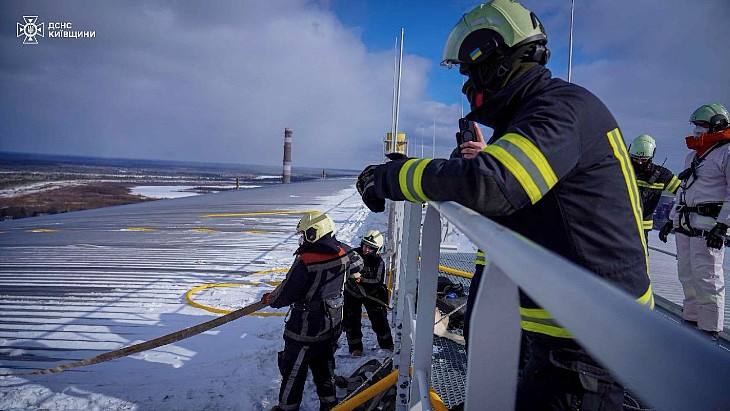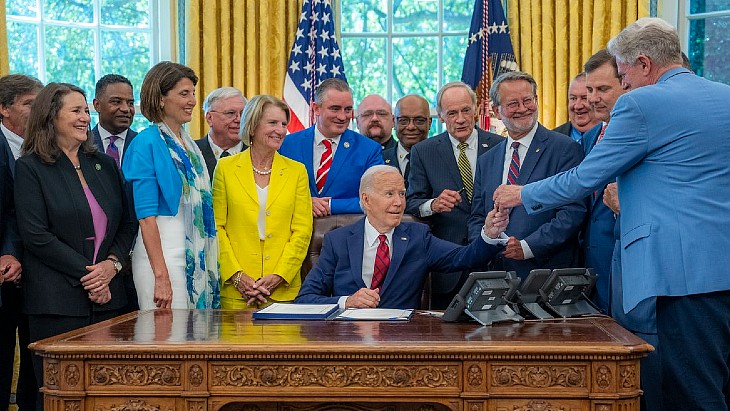IAEA sees safety commitment at Fortum's Loviisa plant
 The operator of the Loviisa nuclear power plant in Finland has demonstrated a strong commitment to safety, an expert team from the International Atomic Energy Agency has concluded. However, the mission made recommendations to Fortum to reinforce some safety measures.
The operator of the Loviisa nuclear power plant in Finland has demonstrated a strong commitment to safety, an expert team from the International Atomic Energy Agency has concluded. However, the mission made recommendations to Fortum to reinforce some safety measures.The operator of the Loviisa nuclear power plant in Finland has demonstrated a strong commitment to safety, an expert team from the International Atomic Energy Agency (IAEA) has concluded. However, the mission made recommendations to Fortum to reinforce some safety measures.
.jpg) |
| Loviisa units 1 and 2 (Image: Fortum) |
An Operational Safety Review Team (OSART) on 22 March completed an 18-day mission to the plant, which comprises two operating 531 MWe pressurised water reactors. The 16-member team consisted of experts from Bulgaria, Brazil, Canada, China, France, Germany, Hungary, Romania, Russia, Slovak Republic, South Africa, Spain, Ukraine, the UK and the USA, as well as IAEA officials.
OSART missions aim to improve operational safety by objectively assessing safety performance using the IAEA's Safety Standards and proposing recommendations for improvement where appropriate.
The review at Loviisa covered the areas of leadership and management for safety; training and qualification; operations; maintenance; technical support; operating experience; radiation protection; chemistry; emergency preparedness and response; accident management; human, technology and organisational interactions; and long-term operation.
The team said it identified a number of good practices at the Loviisa plant that will be shared with the nuclear industry globally. These include that the plant has developed the capability to automatically calculate leak rate tests of containment, as well as establishing a process to test and improve modifications and updates early. The team said Fortum has also adopted a key system to effectively control access to various rooms in the Loviisa plant.
The team made several proposals to improve operational safety at Loviisa, including that plant management should improve communications of their expectations and consistently reinforce their implementation in the field. The plant should also improve maintenance activities and procedures to ensure safe and reliable performance of systems and equipment. The team also recommended Fortum improve the use of human performance tools to minimise human error.
"The team observed that the plant has made proactive safety improvements in recent years, such as major automation modifications and updates for safety systems," said mission team leader Fuming Jiang of the IAEA. "Staff at the plant are open and transparent, and very receptive to proposals to further improve operational safety in the plant."
Loviisa plant manager Satu Katajala said, "We consider international peer reviews to be an important element in improving nuclear safety. Exchanging best practices and learning from other plants is highly valuable for all of us in the nuclear industry. The results and development areas of this OSART review will be included in the continuous improvement of the Loviisa power plant operations."
The OSART team provided a draft of its report to Loviisa plant management and will submit the final report to the Finnish government within three months.
Loviisa plant management said it would address the areas identified for improvement and requested the IAEA schedule a follow-up mission in about 18 months' time.
Loviisa unit 1 was commissioned in 1977 and unit 2 in 1981. The Finnish government issued operating licence extensions in July 2007, enabling the units to operate until 2027 and 2030, respectively. A condition of those licence extensions was that Fortum perform periodic safety assessments every 10 years.
Researched and written
by World Nuclear News










_50521.jpg)

